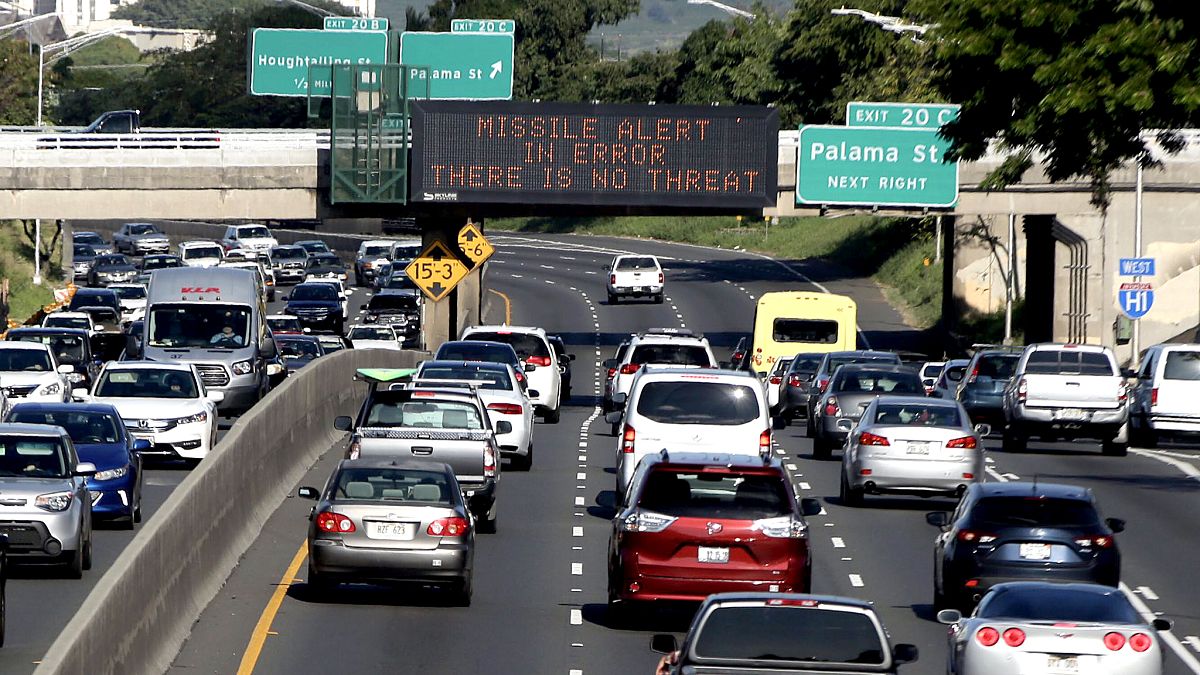The alert warned Hawaiians on their phones of an imminent missile attack. A series of bureaucratic hurdles and 38 minutes later, it became a false alarm.
For 38 terrifying minutes, many Hawaiians spent Saturday morning hunkered in bathtubs and basements waiting for a ballistic missile strike that never came.
911 networks were overwhelmed and some fired off frantic messages to loved ones on the mainland.
Hawaiian public officials called it a day they would never forget.
The panic ensued after the Hawaii Emergency Management Agency mistakenly sent out an alert that warned residents of an imminent ballistic missile strikeand urged them to "seek immediate shelter."
"This is not a drill," the ominous, all-caps push alert blared on people's phones.
The notice turned out to be a false alarm, but the ensuing panic quickly turned to anger and a demand for answers by Hawaiians, their politicians and even the chairman of the Federal Communications Commission about what happened. Why was the alert sent, and why did it take 38 minutes for the Hawaiian government to correct it?
Facing the outcry, Gov. David Ige and Hi-EMA Administrator Vern Miyagi first offered an apology and then some answers during an afternoon press conference.
"I deeply apologize for the trouble and heartbreak we caused today," Miyagi said. "This is my team. We made a mistake. We are going to process this and study this to make sure this doesn't happen again."
Miyagi, a retired Army two-star general, then explained that an individual on his team sent the alert in error, even clicking through a redundancy on a computer screen intended to act as a safeguard from such a mistake.
He said that the incident occurred shortly after a scheduled 8 a.m. local time (1 p.m. ET) shift change. At the beginning of each shift, Miyagi said, his team conducts a routine internal test that involves the Emergency Alert System and the Wireless Emergency Alert.
That test began at 8:05 a.m. (local time). Here's what happened next, according to Miyagi:
8:07 a.m.: Hi-EMA sends a real alert for a ballistic missile attack to television, radio and cellphones, rather than initiating the internal test that was intended.
8:10 a.m.: Hawaii State Adjutant Maj. Gen. Joe Logan contacts U.S. Pacific Command to verify that there was no missile launch. The Honolulu Police Department is then told of the false alarm, prompting officers to go out with bullhorns in order to calm residents, NBC affiliate KHNL reported.
8:13 a.m.: Hi-EMA is able to cancel the alert, which means that those who had not yet received the message — people who had their cellphones off or did not have a signal when the warning was sent — would not get it once their phones reconnected with cell towers.
8:19: - Rep. Tulsi Gabbard, one of Hawaii's two representatives to the U.S. House, is one of the first public officials to tweet that the alert was a mistake.
8:20 a.m.: A minute later Hi-EMA sends out its own public notification on social media that the alert was a false alarm, but those without access to Twitter and Facebook are still left in the dark.
8:24 a.m.: Hawaii Gov. David Ige retweets Hi-EMA's false-alarm announcement on Twitter to spread the word.
8:30 a.m.: Ige then adds the false alarm announcement to his Facebook page.
8:45 a.m.: Thirty-eight panic-filled minutes after the initial alert went out, Miyagi's Hi-EMA team gets FEMA Integral Public Alert and Warning System's authorization to send a follow-up alert to wireless devices, which read, "False Alarm. There is no missile threat or danger to the State of Hawaii."
9:30 a.m.: Gov. Ige first speaks to the media and says that "human error sent out the false alarm."
9:34 a.m.: - Gov. Ige's message is posted to his social media accounts.
1:00 p.m.: - Several hours later Ige and Miyagi hold a press conference to detail the timeline of events that took place in response to the erroneous missile alert. Ige said the government was suspending all future alert drills until Hi-EMA conducts a full investigation into the event.
As of Saturday afternoon, Miyagi said that Hi-EMA would require two-person verification to send tests, as well as real missile launch alerts. They have also added a cancellation protocol that can be instituted within seconds, he said.
Miyagi also said that Hi-EMA is looking into expanding its ability to notify Hawaii's Congressional delegation, local governments and members of staff.
Related: Hawaii false missile alert: FCC to open probe into mistaken warning
Miyagi said he intended to produce a report about the incident by next week.
"I know firsthand what happened today was totally unacceptable and many in our community were deeply affected by this," the governor told reporters. "I'm sorry for that pain and confusion that anyone might have experienced. I'm, too, very angry and disappointed this happened. We are doing everything we can immediately to ensure it never happens again."













